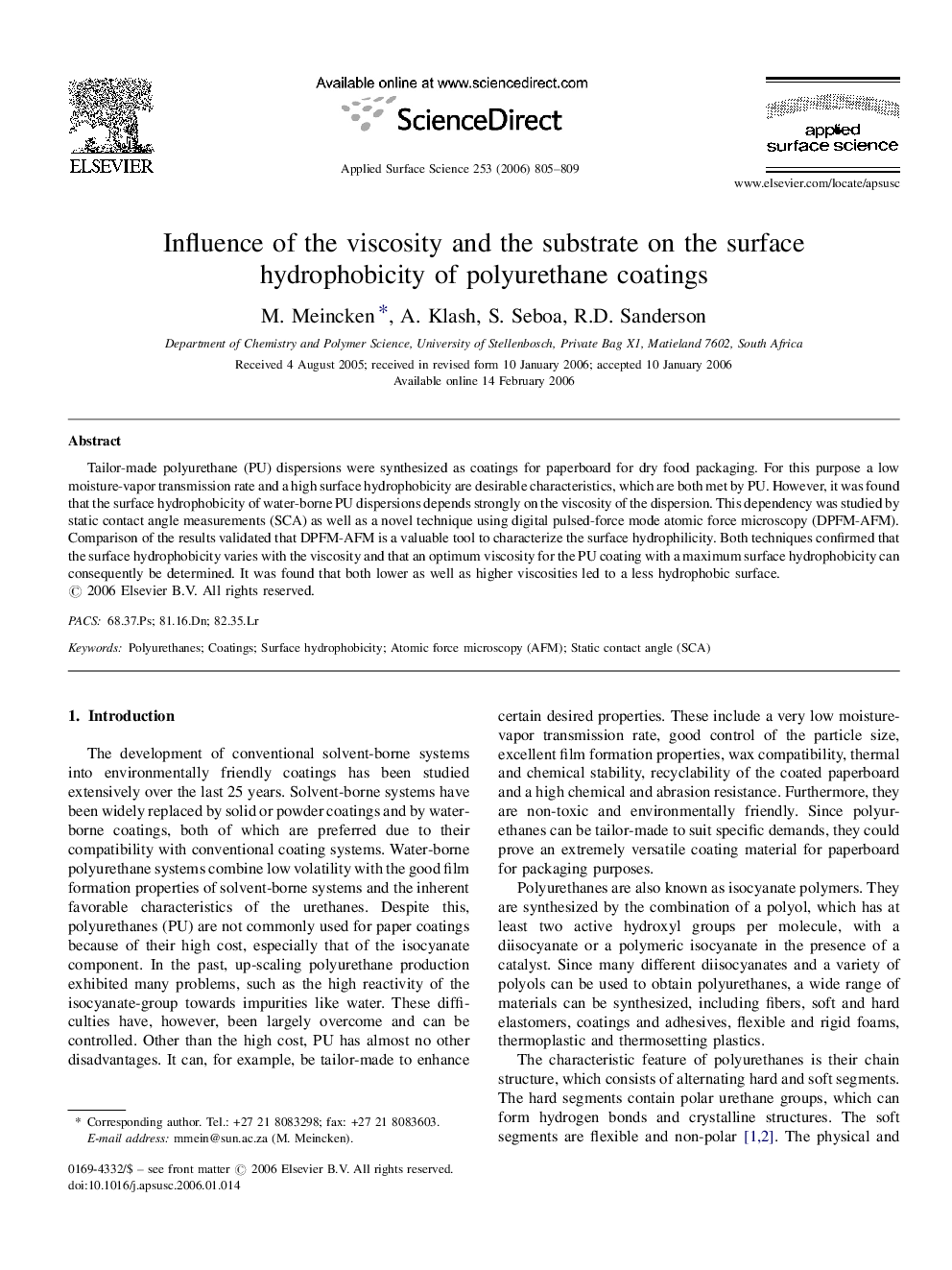| Article ID | Journal | Published Year | Pages | File Type |
|---|---|---|---|---|
| 5370272 | Applied Surface Science | 2006 | 5 Pages |
Tailor-made polyurethane (PU) dispersions were synthesized as coatings for paperboard for dry food packaging. For this purpose a low moisture-vapor transmission rate and a high surface hydrophobicity are desirable characteristics, which are both met by PU. However, it was found that the surface hydrophobicity of water-borne PU dispersions depends strongly on the viscosity of the dispersion. This dependency was studied by static contact angle measurements (SCA) as well as a novel technique using digital pulsed-force mode atomic force microscopy (DPFM-AFM). Comparison of the results validated that DPFM-AFM is a valuable tool to characterize the surface hydrophilicity. Both techniques confirmed that the surface hydrophobicity varies with the viscosity and that an optimum viscosity for the PU coating with a maximum surface hydrophobicity can consequently be determined. It was found that both lower as well as higher viscosities led to a less hydrophobic surface.
